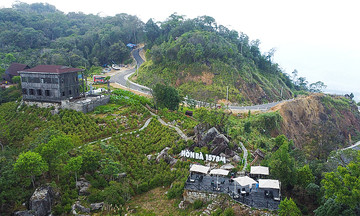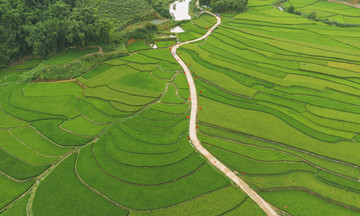According to the Ministry of Culture, Sports, and Tourism website, on 13/7 at the 47th session of the UNESCO World Heritage Committee in Paris, France, UNESCO approved the boundary modification of the Phong Nha - Ke Bang National Park World Heritage Site (Quang Tri, Vietnam) to include Hin Nam No National Park (Khammouane, Laos). The name of this first Vietnam-Laos transboundary heritage site is "Phong Nha - Ke Bang and Hin Nam No National Parks".
Phong Nha - Ke Bang National Park was recognized as a World Heritage Site by UNESCO in 2003 and 2015 with a core zone of 123,326 ha and a buffer zone of 220,055 ha. The park shares a natural border with Hin Nam No National Park. The nomination dossier for the extension was submitted to UNESCO by the two countries in February 2024, evaluated by the International Union for Conservation of Nature, and reviewed at this session based on geological, geomorphological, ecosystem, and biodiversity criteria.
 |
The Chay River in Phong Nha - Ke Bang National Park. Photo: Vo Thanh |
The Chay River in Phong Nha - Ke Bang National Park. Photo: Vo Thanh
This area is one of the world's most intact limestone karst landscapes, located at the intersection of the Annamite Range and the Indochinese limestone belt. The karst system formed 400 million years ago with over 220 km of caves, including Son Doong and Xe Bang Fai caves - some of the world's largest.
The diverse ecosystem includes dry karst forests, humid forests, and underground caves with over 2,700 plant species and 800 vertebrate species in Phong Nha - Ke Bang, and 1,500 plant species and 536 animal species in Hin Nam No, many of which are endemic and endangered.
The management of the transboundary heritage site has been agreed upon by Vietnam and Laos for many years with conservation and law enforcement activities. The Lao Minister of Culture expressed pride in this event and committed to close cooperation with Vietnam to manage the heritage site.
Associate Professor Dr. Le Thi Thu Hien, Director of the Cultural Heritage Department, said this success was due to the government's direction and close coordination with Laos. The two sides will continue to research, develop legal regulations, assess tourism capacity, and protect the heritage from potential threats.
On this occasion, UNESCO also inscribed the Yen Tu - Vinh Nghiem - Con Son, Kiep Bac complex of monuments and landscapes (Vietnam) on the World Heritage List, affirming the unique cultural and historical value of this area.
Hoai Anh












